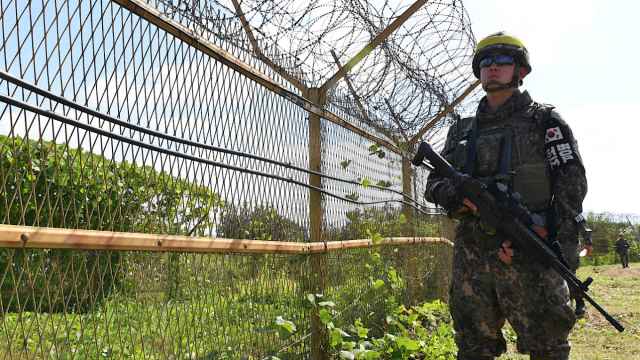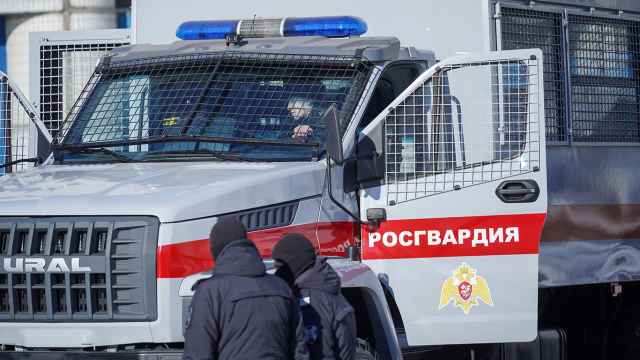Similarities between a new Chinese fighter jet and a prototype Russian plane have led to suggestions that Moscow may be quietly helping Beijing compete with the world's military powers.
Experts say the fifth-generation J-20 fighter, which made its maiden flight in January during a visit by the U.S. defense secretary, could have its origins in the Mikoyan 1.44 stealth jet that never made it to the production line.
A highly placed source close to Russia's defense industry said the similarities suggested that Mikoyan technology had been passed into the hands of Chinese arms designers.
"It looks like they got access … to documents relating to the Mikoyan — the aircraft that the Defense Ministry skipped over in its tender to create a stealth fighter," he said, speaking on condition of anonymity.
He said it was not clear whether such a transfer of technology would have been legal. Analysts say Russia's assistance to the Chinese may help Moscow keep tabs on the defense capabilities of its eastern neighbor, a rising military power.
Independent analyst Adil Mukashev, who specializes in ties between Russia and China, suggested that there had been a financial transaction.
"China bought the technology for parts, including the tail of the Mikoyan, for money," he said.
China's Defense Ministry declined a request for comment. Russia's United Aircraft Corporation, or UAC, which oversees production of the Mikoyan jets, denies that any technology or design transfer took place with China.
Only the United States has an operational fifth-generation fighter, which is nearly impossible to track on radar. Russia is working to start serial production of its prototype craft in the next five to six years.
China's creation of such a plane would put the country in an elite group of military powers, although analysts say it will take years to perfect the craft.
The source said Chinese officials had been invited to the plane's first public display when Russia was in the early stages of creating a fighter jet to compete with the U.S. F-22.
Rival designer Sukhoi was eventually contracted to help build the fighter, and the Mikoyan 1.44, which lacks the radar-evading engineering of the U.S. F-22, was passed over.
China, once a big buyer of Russian tanks, helicopters and jet fighters, has slowed its purchases from Moscow as its own production grows, but military ties remain.
"It wouldn't be the first time for Russians to do this," Stratfor senior analyst Lauren Goodrich said of the possibility that China had received help from Russia.
"As long as it can control all the components, then Russia cannot only control the production of such weaponry but would also know the signatures of the more advanced weaponry the Chinese have," she said.
China's ambassador to Russia, Li Huei, was quoted last year as saying defense cooperation with Russia was moving beyond the buying and selling of weapons.
A Message from The Moscow Times:
Dear readers,
We are facing unprecedented challenges. Russia's Prosecutor General's Office has designated The Moscow Times as an "undesirable" organization, criminalizing our work and putting our staff at risk of prosecution. This follows our earlier unjust labeling as a "foreign agent."
These actions are direct attempts to silence independent journalism in Russia. The authorities claim our work "discredits the decisions of the Russian leadership." We see things differently: we strive to provide accurate, unbiased reporting on Russia.
We, the journalists of The Moscow Times, refuse to be silenced. But to continue our work, we need your help.
Your support, no matter how small, makes a world of difference. If you can, please support us monthly starting from just $2. It's quick to set up, and every contribution makes a significant impact.
By supporting The Moscow Times, you're defending open, independent journalism in the face of repression. Thank you for standing with us.
Remind me later.





